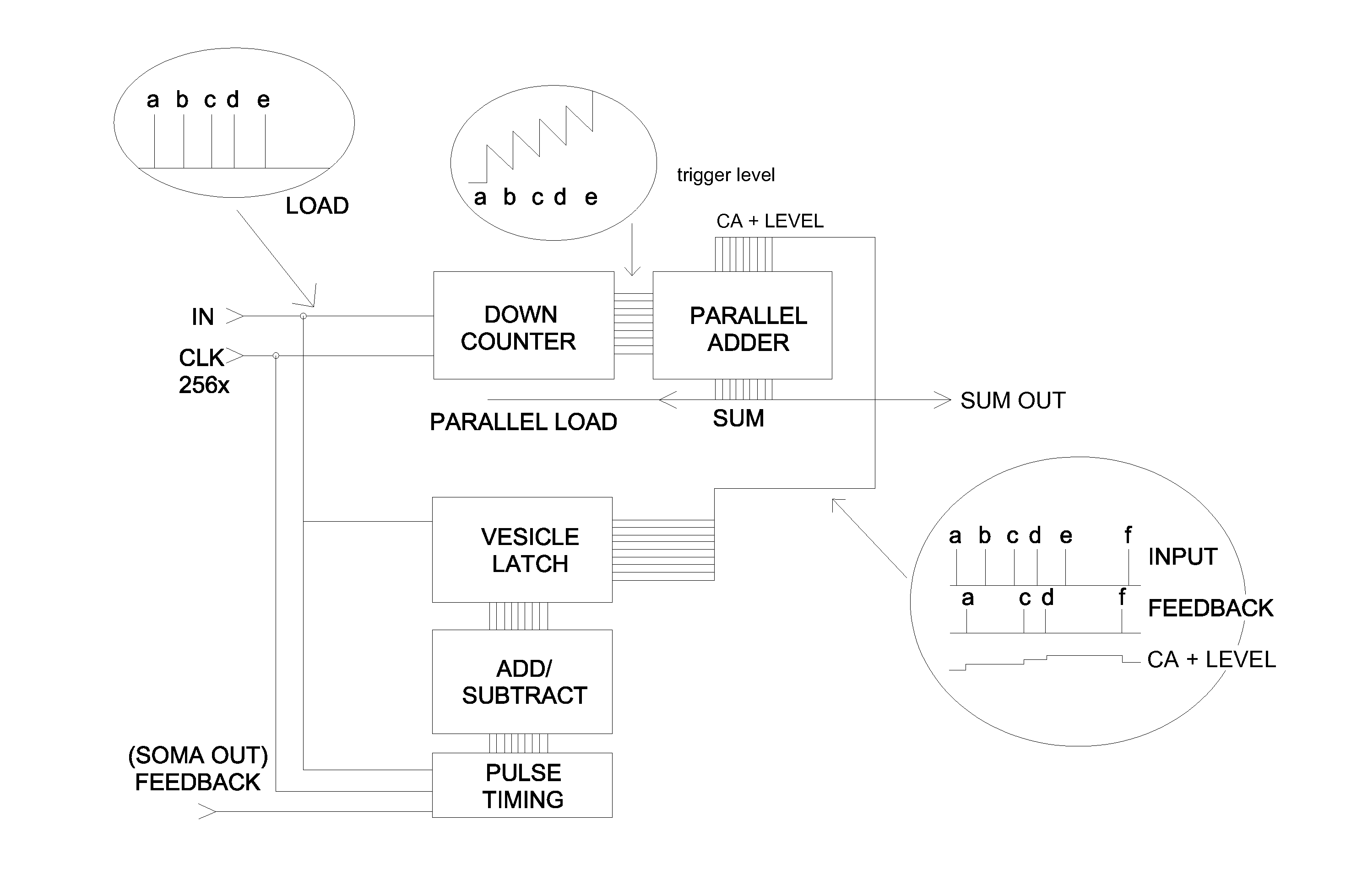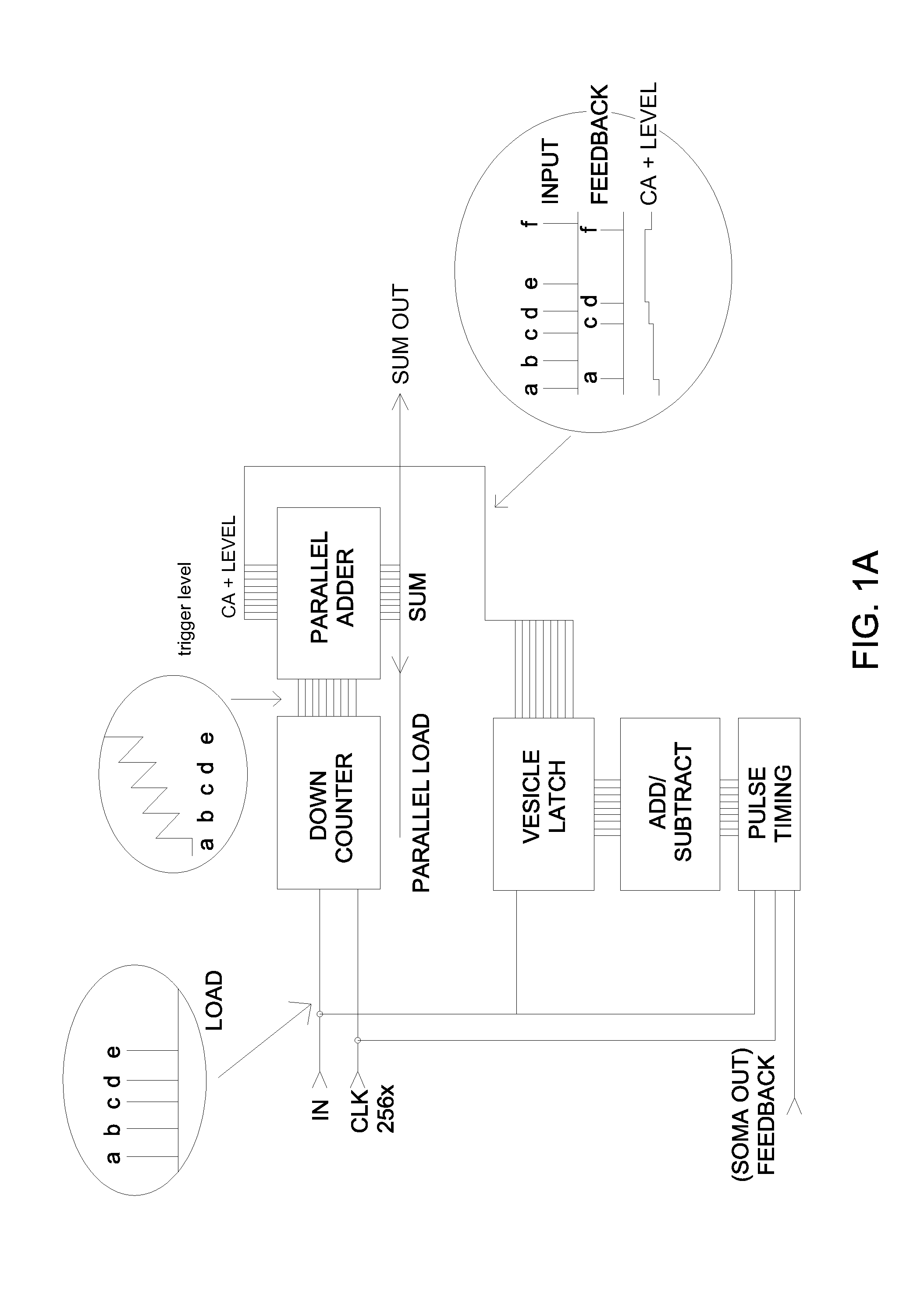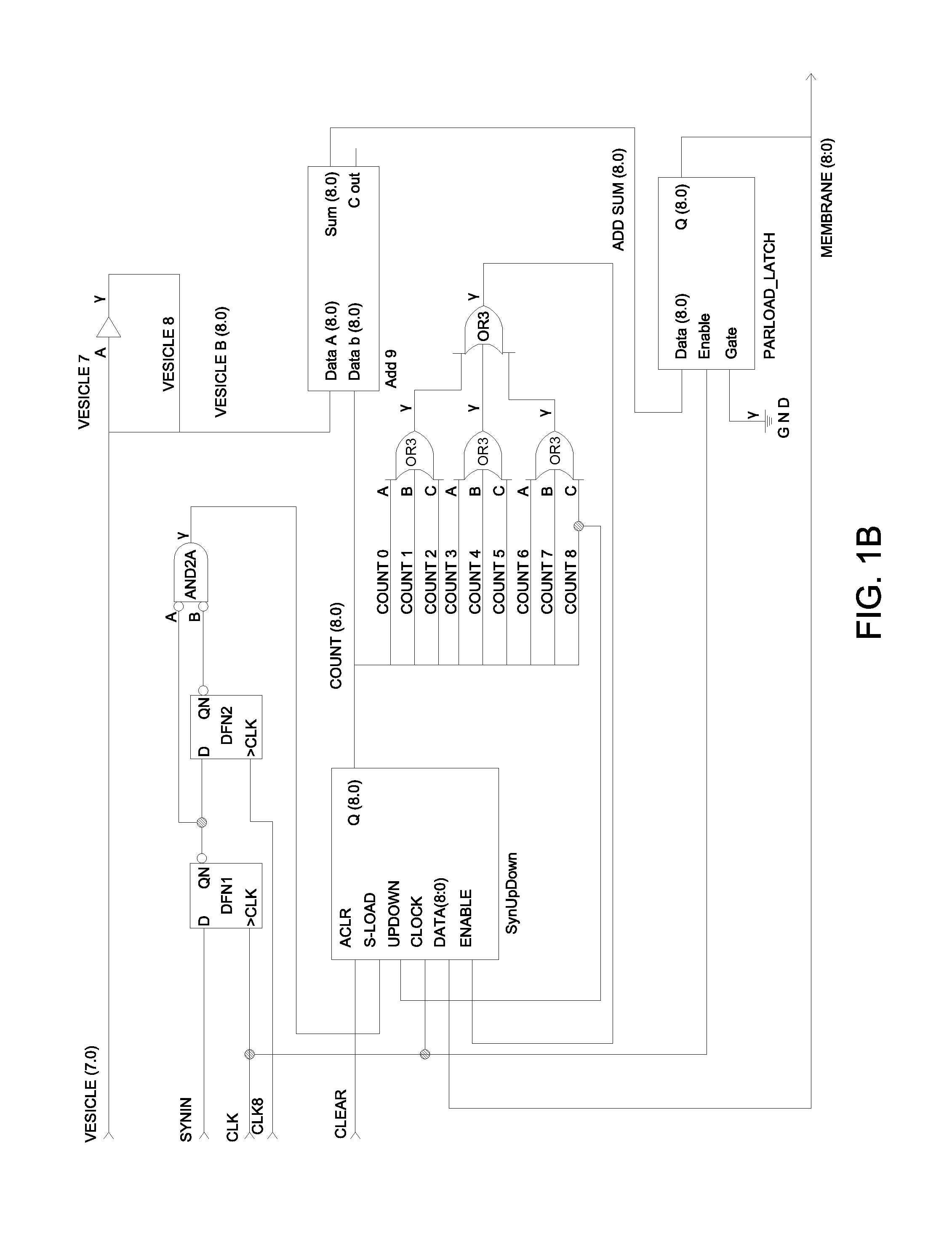Method and a system for creating dynamic neural function libraries
- Summary
- Abstract
- Description
- Claims
- Application Information
AI Technical Summary
Benefits of technology
Problems solved by technology
Method used
Image
Examples
Embodiment Construction
[0050]A plurality of soma circuits is connected through a plurality of dynamic synapse circuits in a hierarchical array. An artificial neuron consists out of at least one synapse circuit and one soma circuit. The synapses receive input pulses derived from other artificial neurons including artificial neurons that are connected to sensory devices. The soma produces an action potential when the synaptic inputs approximate a previously learned pattern, and whereby different artificial neurons produce different output pulses given the same input signals. One instance of neuron input waveforms and a response is shown in FIG. 6. The synapse circuit exhibits dynamic behavior. The synapse strength is altered according to the graph shown in FIG. 8. In FIG. 8, the time difference Delta t is directly related to the artificial neuron clock speed. The synapse strength is increased when the artificial neuron synaptic input pulse precedes the soma output pulse by time t and by a value varying betw...
PUM
 Login to View More
Login to View More Abstract
Description
Claims
Application Information
 Login to View More
Login to View More - R&D
- Intellectual Property
- Life Sciences
- Materials
- Tech Scout
- Unparalleled Data Quality
- Higher Quality Content
- 60% Fewer Hallucinations
Browse by: Latest US Patents, China's latest patents, Technical Efficacy Thesaurus, Application Domain, Technology Topic, Popular Technical Reports.
© 2025 PatSnap. All rights reserved.Legal|Privacy policy|Modern Slavery Act Transparency Statement|Sitemap|About US| Contact US: help@patsnap.com



